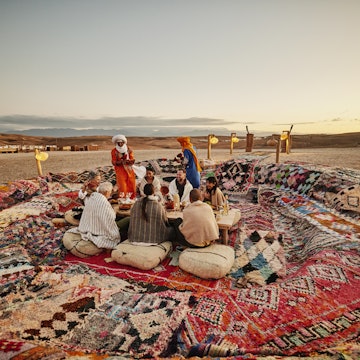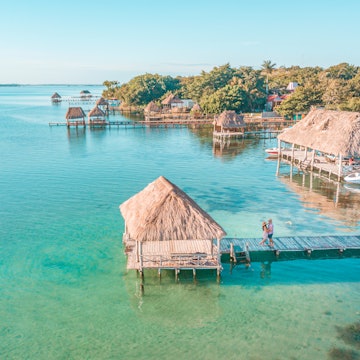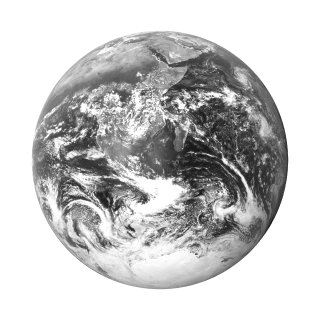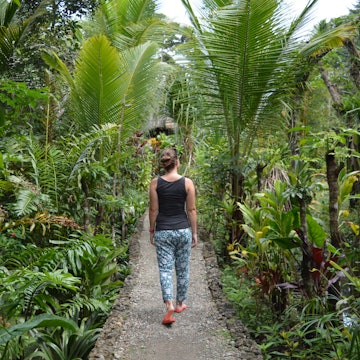

Moroccan street musician on Djemaa el Fna square. Bartosz Hadyniak/Getty Images
It’s true you don’t have to spend the earth to have a good time in Marrakesh: search out reasonably priced places to stay and eat well cheaply at medina pavement cafes and street stalls.
But then the incidentals can start to stack up – that fabulous restaurant you just have to try, those gorgeous lanterns you really want to take home, that floaty kaftan you saw in the souq. How good it is to know, then, that you can find plenty of free things to do that will stretch your budget and enhance your experience of the red city.

1. Join the carnival at Djemaa El Fna
Food stalls are wheeled into place on the main square in Marrakesh’s medina, Djemaa El Fna, from around 5pm every day. As dusk falls and smoke starts to rise from the grills, people begin to arrive and mill around the stalls, deciding where to eat. Everyone is having a good time in the carnival atmosphere. Between courses, wander around the edges of the food stalls where you’ll find entertainers – gnaoua performers in bright satins and seashell-festooned fezzes playing three-stringed guembris and twirling in acrobatic leaps; men dressed as belly dancers wiggling their hips and twitching their veils as their audience giggles delightedly; musicians singing nostalgically of their mountain villages. It’s all free to watch, though if you take photos, a tip of a few dirham is generally expected.
Local tip: You’ll find a wider range of entertainers at weekends when boxers and comedians join the throng of entertainers on the square.
2. Keep the old tradition of storytelling alive
While storytellers on Djemaa El Fna are a thing of the past, you can still experience this ancient tradition in Marrakesh. Check out the free events at The World Storytelling Cafe, a friendly vegan restaurant near the Ben Youssef Medersa where you can listen to stories over delicious tapas. Alternatively, make your way over to Cafe Clock at 7pm on Thursdays for their free storytelling sessions in English and Darija (Moroccan Arabic).
3. Enjoy free concerts to rock the kasbah
Head to Cafe Clock in the kasbah for one of their free evening concerts. On Mondays and Fridays there’s laid-back oud music, featuring the classical Arabian lute with 11 strings. Anything goes at the jam session on Wednesdays, when you can pick up one of their instruments, or bring your own – though clapping along is just as good. All concerts start at 7pm.

4. Watch artisans at work
The Ensemble Artisanal, not far from Djemaa El Fna, is a real win – here you can see artisans at work carving wood, weaving fabrics, working with leather, making jewelry and painting ceramics. The government-run showroom houses a wide array of the traditional crafts of Morocco. And if you do decide to buy, you’ll find the fixed prices lower than in the souq.
5. Visit the tanneries
Wend your way to the end of Rue Bab El Debbagh to the tanneries up against the city walls. While a few chancers might try to offer you a guided tour for a fee, there is no charge for entry. You’ll see men working in the pits, washing and soaking the skins to produce the famously soft leather used for bags and jackets. On your way back, pop into La Clinique du Ballon at no. 68, where Kamal Boukentar crafts leather soccer balls like his father and grandfather before him.
Local tip: Plan your visit for the morning before the hot sun makes the tanning smells worse.
6. Get inspired by top designers
Marrakesh is known for the superb contemporary design that you see in top decor magazines. Soak up ideas for getting that Moroccan look back home with a peek at the best interior designers: an eclectic one-off piece from Studio Augustine, sleek linens at Corinne Bensimon’s Maison, spectacular rugs at Soufiane Zarib and lanterns at Maison Blaoui.
Local tip: At Soufiane Zarib on Ave El Glaoui in the Bab Doukkala neighborhood, you’ll need to knock on the imposing front door to be admitted.
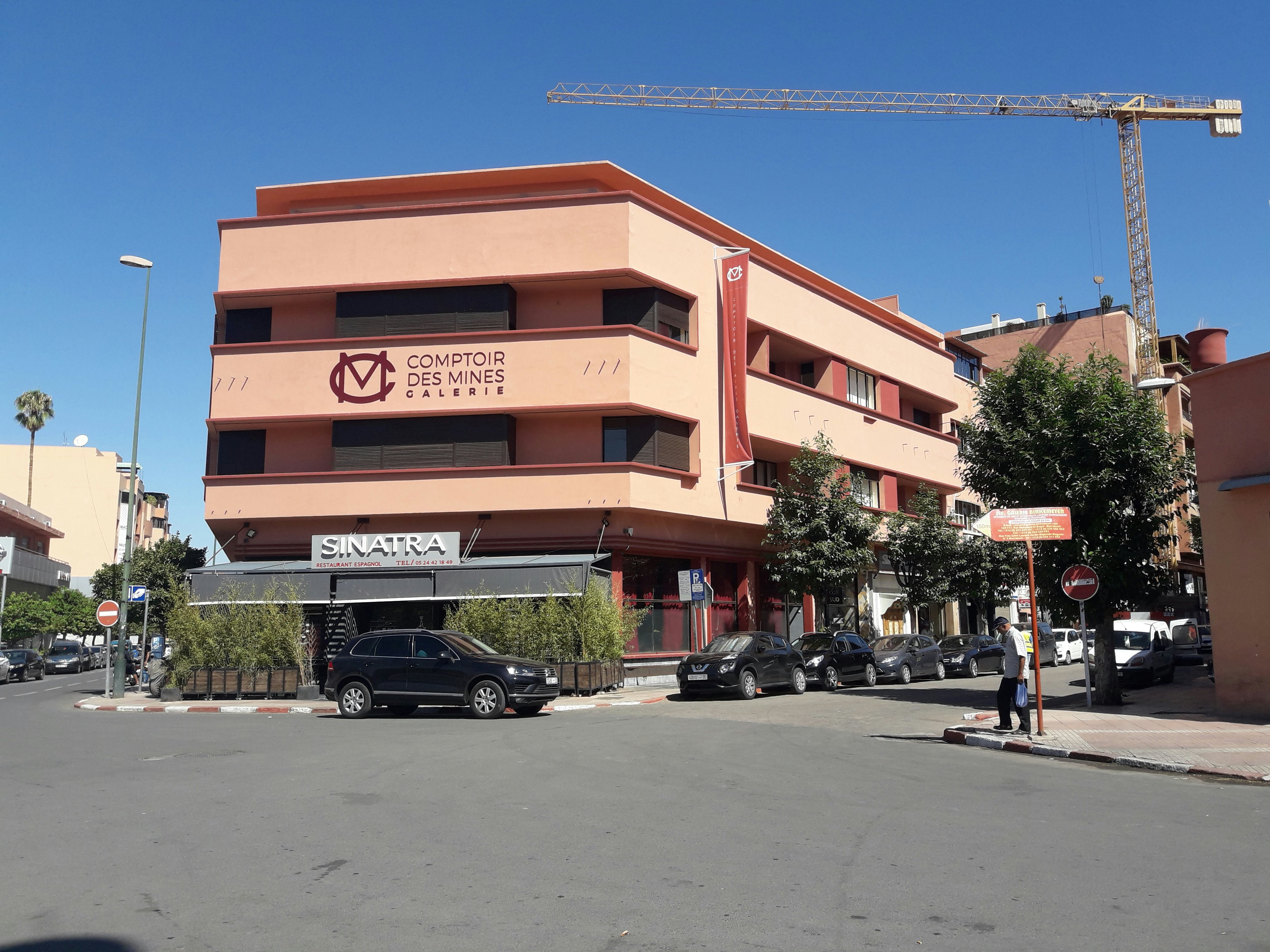
7. Saunter round the art galleries in Gueliz
Head for the Ville Nouvelle (new city) suburb of Gueliz where you’ll find a number of cutting-edge art galleries, many of them located in buildings that are themselves works of art from the art deco period. All are free to enter. Comptoir des Mines is one such gallery, showing contemporary Moroccan and other African artists over three floors as well as exhibiting large installations next door. Don’t miss nearby Passage Ghandouri at 61 Ave Yougoslavie, a mini shopping mall crammed with galleries ranging from spectacular bronze lanterns to avant-garde fashion pieces, contemporary photography to mixed media paintings.
Planning tip: Follow the "Gueliz Art and Art Deco Walk" in Pocket Marrakesh to get the best out of the Gueliz galleries.








